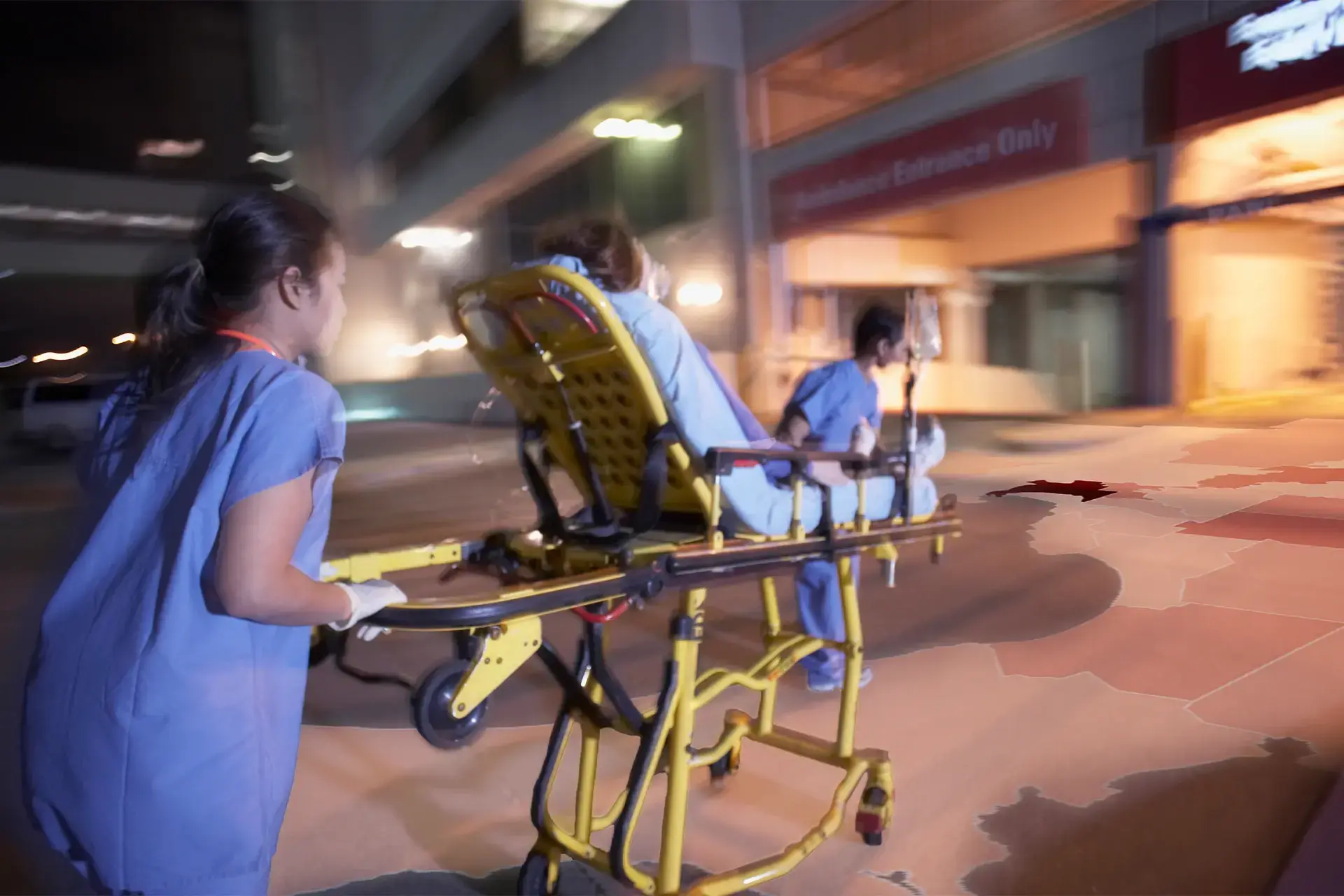
Mapping the hidden lives of Melbourne’s night workers

The term night-time economy evokes images of people enjoying late-night activities, but our Map of the Month asks, what of the workers that keep the city running while the rest of us sleep?
Published 12 June 2024
The night time is in Melbourne’s DNA. From laneway arts and a world-famous twilight event and culture scene, to right back to its Indigenous origins, the city is deeply intertwined with activity after dark.
Increasingly, cities around the world are recognising the importance of the night-time economy (NTE) to their vitality and growth.
More than eighty cities worldwide have appointed ‘night mayors’, ‘night czars’ and ‘night managers’ to oversee their NTEs, enhancing the social and economic vibrancy of city nightlife, while ensuring public safety.
Melbourne is amongst these. It has been fifteen years since the publication of the City of Melbourne's Policy for the 24 Hour City and this idea continues to be a priority for the City of Melbourne Council.
Yet often we speak of the night from the point of view of those out for fun and consumption.
But what about those that work in the NTE?
With Melbourne aspiring to become a vibrant 24-hour city, one crucial question arises: where do the city’s night-shift workers fit in?
In a city operating around-the-clock, night shift workers are the heartbeat.
They keep the city running when most of us are asleep, taking on roles like healthcare professionals, emergency responders, public transport operators, cleaners and hospitality staff, to name a few.
They ensure hospitals function, streets are safe and essential services are available.
They also play a key role in ensuring the city is ready for the following day.
Mapping those who work in the shadows
As Melbourne’s night-time economy continues to grow, policies and urban governance structures must evolve to support the unique needs of night workers, ensuring their safety and wellbeing.
By understanding our night workers, we can better allocate resources and services, like healthcare and emergency services, to where they are most needed during the night-time hours.
For example, effective transport planning relies on understanding travel patterns, including those of night workers who may require safe, reliable transport options during non-peak hours.
So, what do we know about where Melbourne’s night-shift workers live and work?
This apparently simple question tells us just how challenging it is to grasp the city’s night-time activity, as so much of our data, policies and attention is focused on the daytime.
There are two major challenges to understanding night work: classification and data availability.
Defining who qualifies as a night worker and determining the start and end of night work hours, is a complex task. This complexity is compounded by a lack of good datasets for analysing the labour market over a 24-hour period.
As part of our Australian Research Council 'Night Shift' project, we have searched through datasets from bodies like the Australian Bureau of Statistics (ABS) to try and quantify night workers.
We are confident that upwards of a million people could be counted as night workers in Australia.

However, none of these datasets provide the detail that would allow us to accurately report the number of people working at night across Greater Melbourne.
The closest we could get to understanding night workers was using data from the 2020/21 ABS Time Use Survey, which provides an overview of which sectors Australians work in at night, but only at a national level.
This data shows us that a significant proportion of health and social assistance employees, including nurses and midwives, work at night.
We can then use 2021 Census data to map where nurses and midwives live and where they work within Greater Melbourne, to see what that tells us about these workers and the challenges they might face getting to and from work at night.
From counting, to accounting for
There are more than 50,000 nurses and midwives working across metropolitan Melbourne.
Our maps found that many reside in outer local government areas like Casey, Wyndham, and Whittlesea, while most of their jobs are typically in central areas like the Cities of Melbourne, Banyule and Monash.
We don’t know how far individual nurses and midwives who do night work travel to get to and from work, but this disparity in locations highlights the potentially long commutes and transport challenges faced by these workers.
This has implications for transport planning as we need to ensure reliable and safe night-time travel options are available for these essential workers.
The 2021 Census records most nurses and midwives (67 per cent) travelled to work by car and seven per cent travelled by public transport.
A further 23 per cent worked from home or did not travel – although the timing of the Census during a pandemic lockdown may have influenced this figure.

Politics & Society
‘Forcing’ workers into the office misses the point
Another key piece of data from the Census is that nine out of ten nurses and midwives in Greater Melbourne identify as female and past surveys have shown that women report feeling less safe than men when walking alone at night.
But we need more, and better, data.
Even just looking at nurses and midwives, we don’t know nearly enough about the specific group that travels and works at night in Melbourne.
Where do they live? How far do they travel? How do they get there? What influences these decisions?

Understanding the who, what and where of night work is the first step toward creating a supportive environment for these vital workers and ensuring Melbourne’s success as a vibrant 24-hour city.
The policymakers who manage our cities at local, state and national levels, must account for, value and support night workers.
Their nightlives need to be valued and voices need to be incorporated in the ways in which we manage our cities.
Let’s not leave our night workers in the dark.
Map of the Month is a science communication project of the University of Melbourne (Melbourne Centre for Cities, AURIN, Melbourne Data Analytics Platform and Pursuit) using maps to spark important policy conversations across metropolitan Melbourne. This pilot is supported by the Lord Mayor’s Charitable Foundation and in partnership with the Victorian Office for Suburban Development and the Municipal Association of Victoria. Academics, community leaders and government representatives from across Melbourne contribute to the maps and accompanying stories.
This month’s story was produced in collaboration with the Australian Research Council 'Night Shift' project, and the maps were produced by Kate Man-Hua Chu and Sayan Bachar using data from the Australian Bureau of Statistics.

